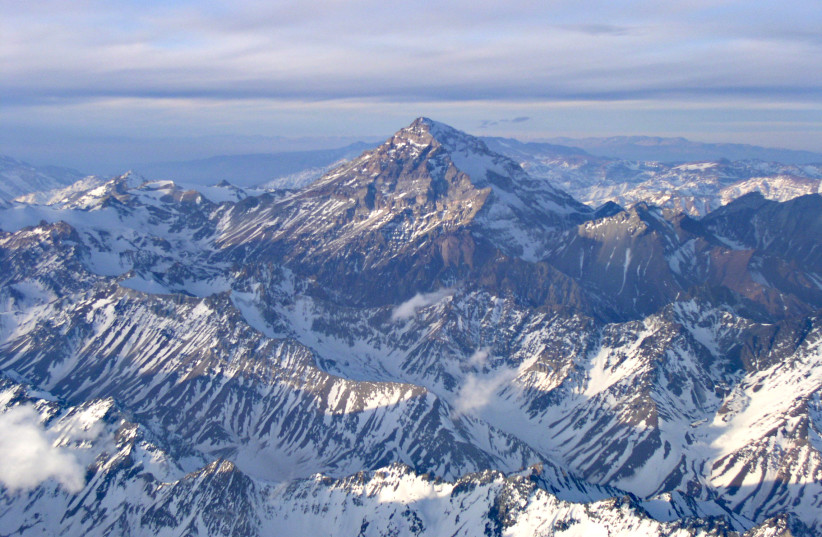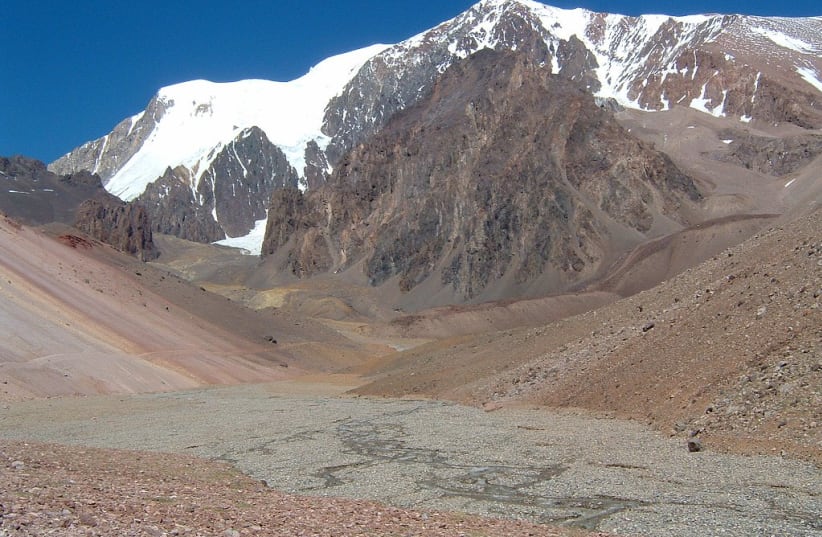The body of a young hiker was found on one of the highest mountain peaks in South America last week and was identified as Marta Emilia Altamirano, an Argentinian woman from Tucumán province who disappeared in 1981, according to Argentinian media.
Mercedario, where she was discovered, is the eighth tallest mountain of the Andes, located in the Argentinian province of San Juan.
Altamirano was on a hiking trip with her sister and her boyfriend in 1981 when she wandered into a hard-to-access area and fell into a crevasse. Her companions looked for her for several hours but only found her the next morning once she had already passed away, according to the Argentinian newspaper El Tiempo de San Juan.
They climbed down the mountain to get help but were not able to reach local authorities until two full days after Altamirano's passing. When authorities returned to look for Altamirano's body, they could not find it.
Locating and identifying the body

Despite at least four separate attempts to locate her remains, the body was not found until late January 2023, when it was discovered stuck in a glacier 5,000 meters above sea level. According to a report by National Geographic, the discovery was made by a group of climbers.
The body had been well-preserved by the ice and snow, so Altamirano's relatives had no trouble identifying her. Authorities still ran a DNA test to be certain, according to Argentinian media, and confirmed her identity that way.
"We are so happy, so grateful...to be able to be ...together [as a family] in this situation and to know that it is her," Altamirano's sister Corina told local Tucumán newspaper La Gaceta. "There are no doubts [about her identity] and we are also grateful for the scientific work, which was so neat and so meticulous, that the scientists did. As soon as they started showing us everything, I knew it was her."
"Everyone worked together so respectfully and lovingly and humanely," said Corina of the individuals who worked on her sister's case. "It moved us."
The life and death of Marta Emilia Altamirano
Corina and Marta were very close growing up - "like twins" Corina told La Gaceta. "My grandparents had a farm in Benjamin Paz. I think that childhood [there] is what [created Marta's] passion for the mountains," she recounted.
"We [climbed] all the peaks of Tucumán , and we prepared for two years to go to Merdecario," Corina explained, recounting the fatal trip that began on March 23, 1981.
"She fell on the 27th of March. We were approximately 6,000 meters [up]. At that time, the ice was hard - it was called 'crystal ice.' There was little snow for boots to grab onto and the accident was like this: She was going ahead and slipped...it happened in one second.
"We were totally sure of what we were doing, but there are things that can happen when one goes mountaineering. You know that you will run risks. She was very advanced for her age [in terms of risk assessment]."
Corina told Argentinian newspaper La Nacion: "Every time that we would go on some excursion, she would tell me 'if I die, I want you to bury me in the Cemetery of Andinistas, or leave me where I fell."
The Cemetery of Andinistas is located at the foot of the Andes mountains in Mendoza, Argentina. According to Argentinian children's magazine Billiken, the cemetery was likely begun in the 19th century to bury deceased railway workers, but over the decades became a spot where families would bury their loved ones who passed traversing the mountains. Now, due to the cemetery's location and tradition of burying hikers there, individuals can request to be buried there after their passing even if they passed in another place.
In the years between Marta's death and the rescue of her body, it brought comfort to her sister that she was resting on Mercedario, according to La Gaceta. Also during that time, a small memorial was built atop the mountain to honor Marta's memory.
According to La Nacion, the family plans to bring the body back to Tucumán so that Marta's parents and loved ones can say goodbye in person. Then, they plan to cremate her and spread her ashes on Mercedario, "so that she can rest there," said Corina. "What better place is there to return to than Mercedario? I believe that that is her home."
The risks and environmental impact of mountain climbing
High-altitude climbing, according to data published in a 2019 study from the International Journal of Environmental Research and Public Health, high-altitude climbing is the most dangerous mountain sport a person can engage in.
Many climbers, like Marta Altamirano, know the risks and choose to pursue it anyway out of a deep love for the Earth and a desire to experience nature in new and exciting ways.
The current state of high-altitude climbing does not necessarily reflect the spirit of the sport, according to some enthusiasts.
“Climbing Everest looks like a big joke today,” says Captain MS Kohli, a mountaineer who in 1965 led India’s first successful expedition to summit Mount Everest told the BBC in 2015. “It absolutely does not resemble the old days when there were adventures, challenges and exploration. It’s just physically going up with the help of others.”
Everest's crowding issue is a contributing factor, but also a symptom - an influx of inexperienced hikers make the trip more dangerous for their peers and are themselves more likely to get hurt or die.
Several hikers die each year on risky peaks worldwide including Africa's Mt. Kilimanjaro, South America's Mt. Aconcagua, and the Himalayas' Cho Oyu, Everest and Annapurana I. Causes of death include (but are not limited to) heart failure, sudden falls, hypothermia and exposure. The three aforementioned Himalayan peaks are the most deadly, according to the 2019 study data, with annual death rates (per 1000) of 6.4, 15.6, and 45.0 respectively.
More hikers also result in more waste polluting the mountain's ecosystem. A 2019 CNN article reported that a group of volunteers cleaned up three metric tons (6,613 lbs) of garbage from Mount Everest in their first two weeks of work. They also discovered four dead bodies.
Everest's corpse problem
According to the 2015 BBC report, there are more than 200 bodies strewn about on Mount Everest - some are buried in the snow and some have become de-facto trail markers.
Bodies stay on mountains for a variety of reasons. Returning a body to its home country costs thousands of dollars and requires the manpower of six to eight Sherpas - individuals local to the mountain- who must put their own lives at risk. Some hikers explicitly make it known that they wish to remain on the mountain if they die mountaineering, as a point of pride and adherence to some mountaineer's traditions.
However, the bodies themselves also disrupt the environment, particularly as climate change causes ice and snow to thaw and the corpses begin to rot rather than remain preserved in ice.
Most experienced hikers recommend that anyone wishing to climb the world's highest peaks be well-equipped, respectful of their environment, and self-aware enough to stay safe and know when to return to base camp.
